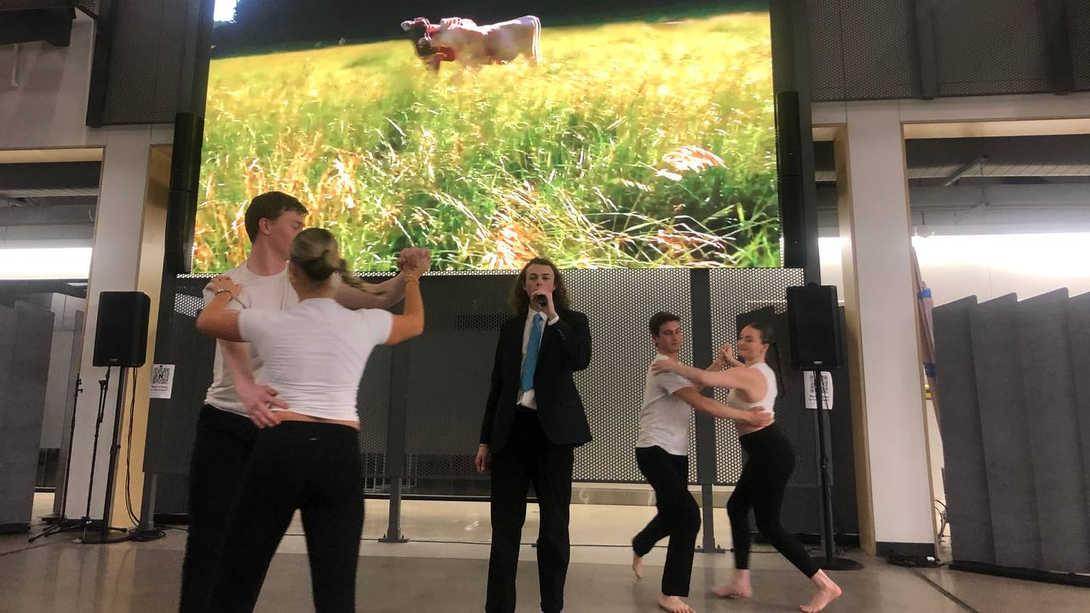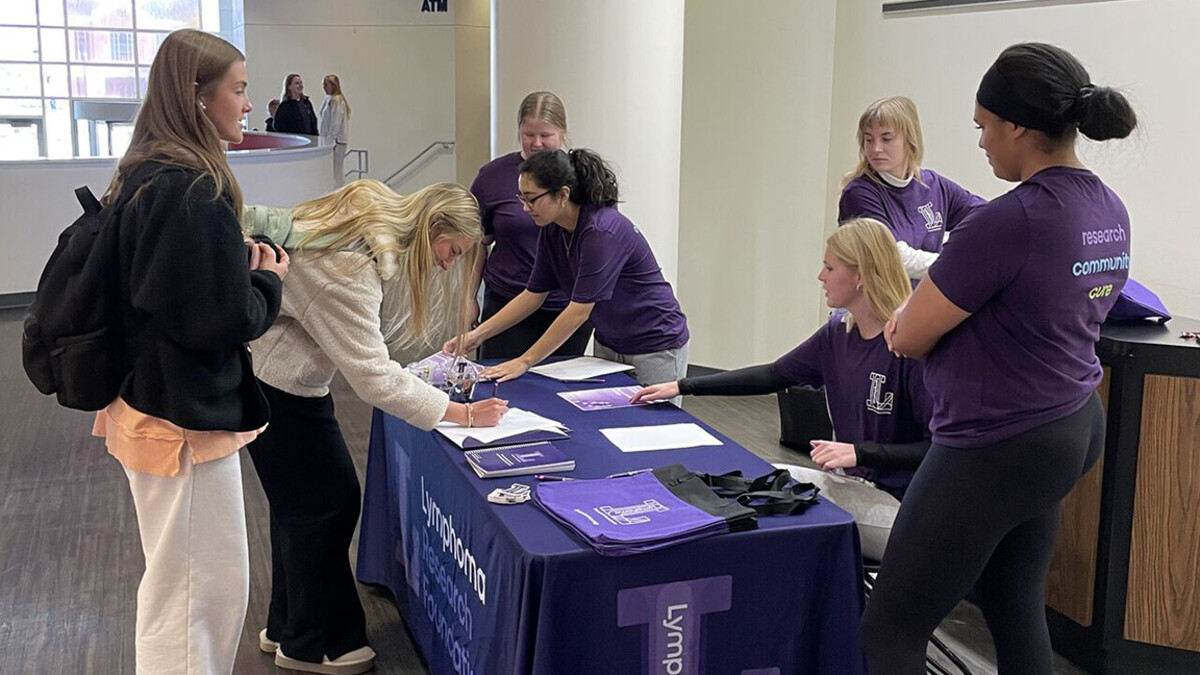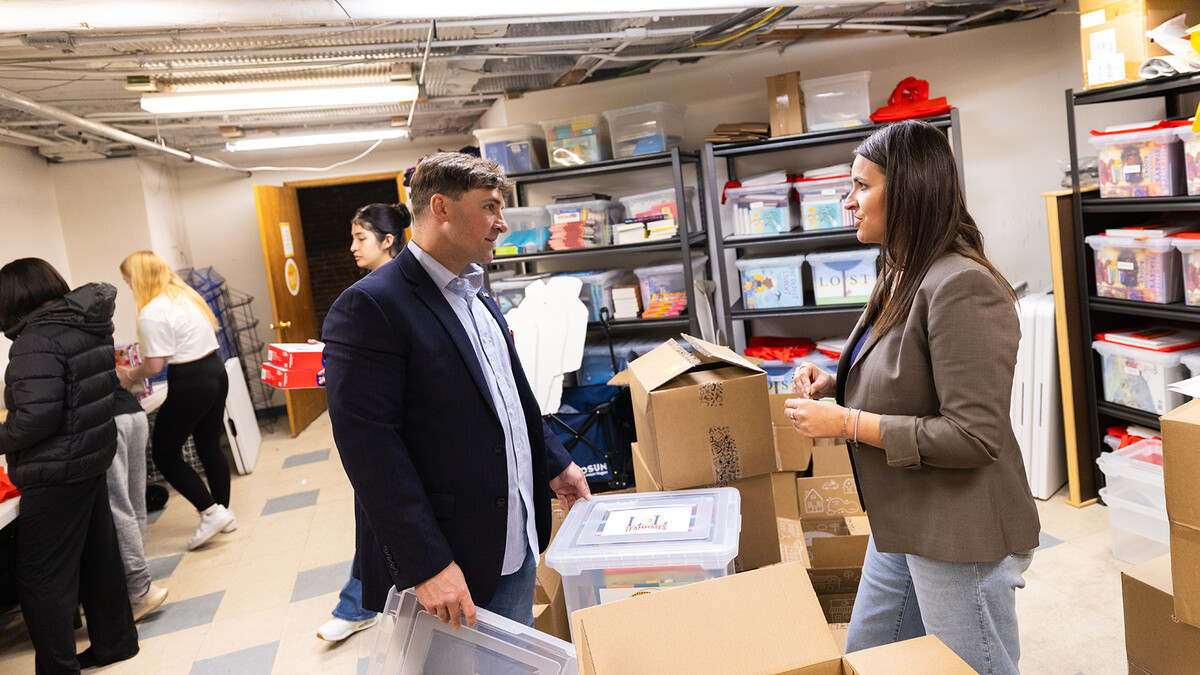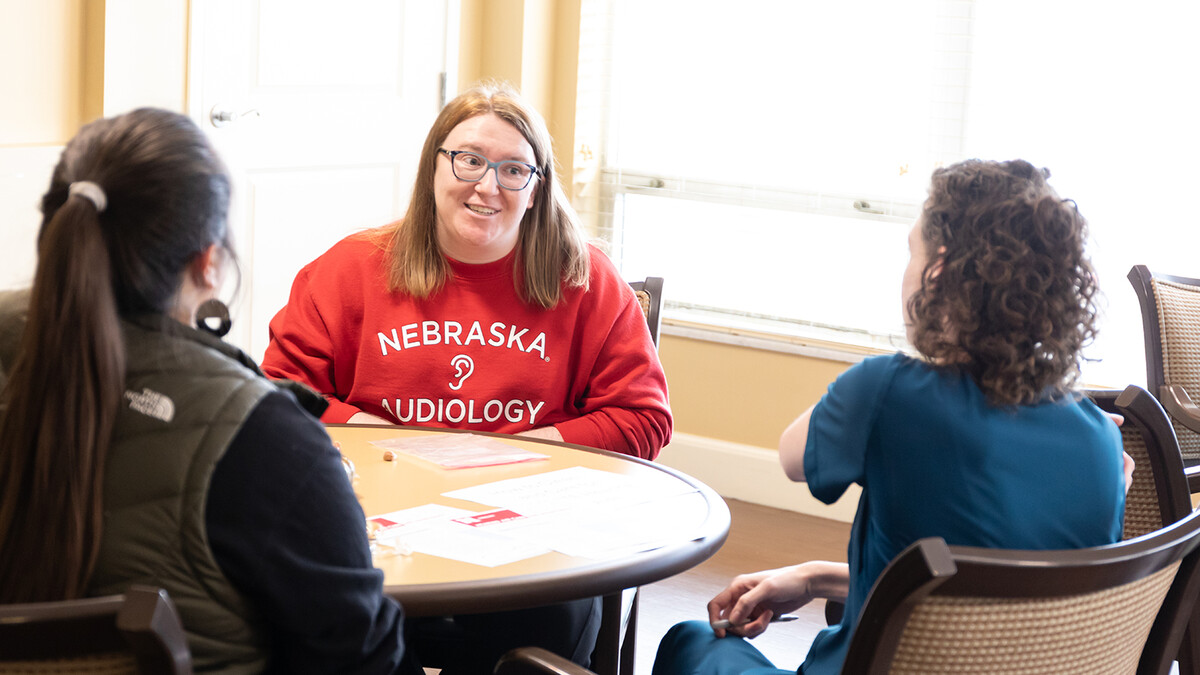
Mason Hardin, a senior chemistry major from Sioux City, Iowa, incorporated many of his interests into a unique senior honors thesis presentation.
Hardin has been working for almost three years on research on protecting cattle from blood-feeding insects in the lab of Georgina Bingham, research associate professor of entomology. When it came time to share the work, Harding collaborated with the Hixson-Lied College of Fine and Performing Arts to integrate music and dance into his method of communicating the science.
“Being able to include people on the research journey is part of communicating scientific results,” Hardin said. “To be able to take people on that journey and help them understand the science and the story was a fun aspect of my project.”
Hardin investigated if the drug nitisinone could be injected into cattle or given orally to control blood-feeding insects in the field. If successful, the work could help develop methods of protecting cattle herds against disease and other problems caused by blood-feeding insects like the stable fly, which Hardin’s work focused on.
While preparing for the presentation, Bingham suggested Hardin incorporate the arts for a more unconventional delivery. Hardin is also pursuing a theater minor. He consulted with Bingham; Limei Zhang, associate professor of biochemistry; and Susan Ourada, associate professor of dance.
“Initially I was hesitant because it’s not traditional to incorporate dance and music, but I was open to trying to new things,” Hardin said.
Bingham thought Hardin, through combining his disparate interests, could bring a fresh perspective on how to share complex scientific concepts.
“His passion for storytelling made him the perfect candidate to explore a new form of science communication,” Bingham said. “Mason’s ability to weave science into a narrative allowed him to present his thesis in a way that is both engaging and meaningful.”
Hardin was taking a graphic design course and created some illustrations to accompany the information. More significantly, he worked with fine and performing arts students to identify which elements of the research they could demonstrate using dance. They put together a routine, for example, to the song “Summertime” to create a picture of the ideal scenario, and then abruptly halted to show the reality of the challenges producers face.
In another moment, they illustrated protein inhibition through each performer representing a protein and how to prevent proteins from carrying out a reaction.
“It was interesting cooperating with the performers to bridge the gap of how we’re going to explain the science visually and in movement,” Hardin said.
Hardin said developing the presentation with the dancers got fresh eyes on the science and also helped him clarify his own communication of the information.
“I had to be able to consciously explain the process to people, especially if they don’t necessarily have the same background,” he said. “I had to refine how I explain it because sometimes it was like, ‘That doesn’t make sense.’ So I had to stop and explain (in a different) way.”
Hardin found it valuable to explore alternate modes of science communication as a way to bridge the gap between the research and the public as well as between disciplines. Ultimately Hardin came to feel that the method can broaden audiences for scientific content.
“I see it as a necessity to incorporate novel approaches,” he said. “Being able to incorporate it into its own unique form and make a memorable experience might increase the impact and ability for it to be seen by others.”
Bingham said these kind of approaches can both broaden reach more people and also deepen their understanding of the work, regardless of their own history with the topic.
“As humans, we are naturally drawn to stories, and when scientific research is framed in a narrative, it becomes more relatable and memorable,” she said. “By embracing creative techniques, such as visual arts, performance, or interactive elements, we can better connect complex ideas with people from all walks of life.”
Hardin’s undergraduate research experience gave him a picture of the real-world research process, he said, and allowed him to build on his classroom experience. He plans to attend medical school in the fall and said the project made him interested in participating in more research.
“It’s really interesting to see how far I came in this process and to see where it can take me in the future,” Hardin said.







